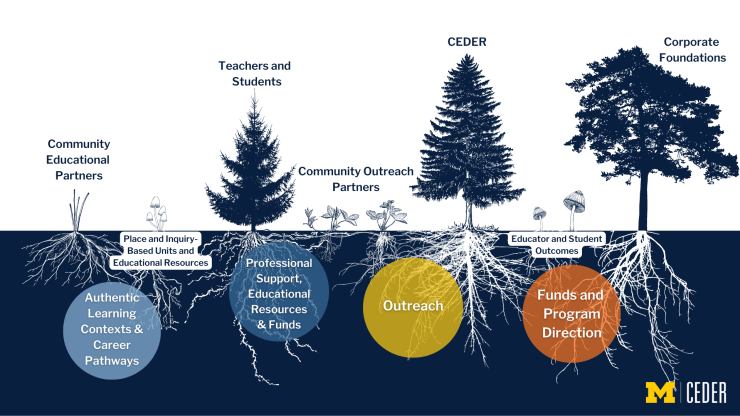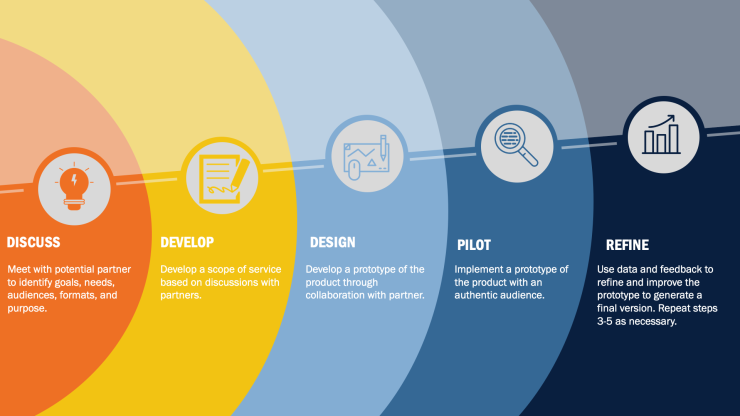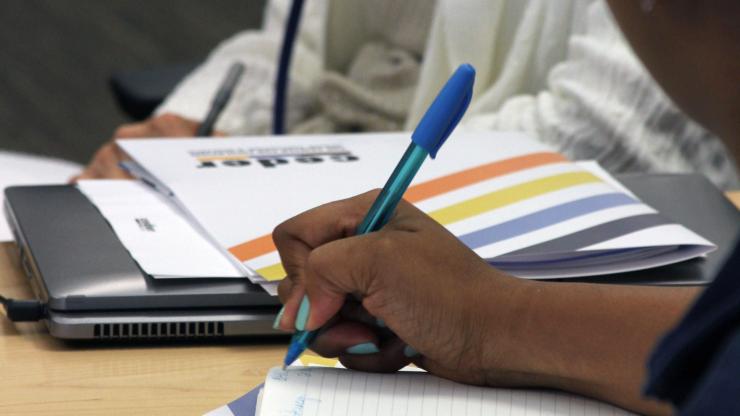Feel Your Feelings: Practices and resources for processing eco-grief
This blog post by Emily Schaller originally appeared on the North American Association for Environmental Education (NAAEE) website.
Eco-despair, eco-anxiety, eco-grief, solastalgia, climate stress, climate grief…all of these terms have slightly different meanings, but ultimately they describe the emotions that arise as a person anticipates or witnesses environmental degradation and a loss of the places that have shaped who they are.
If you have experienced these emotions, you are not alone. This is becoming an increasingly more common issue, especially for youth. One study, published in The Lancet Planetary Health journal in 2021, surveyed 10,000 young people (ages 16–25) in 10 countries around the world to explore their feelings about climate change. Respondents across all countries reported a large amount of worry, with almost 60% saying they felt “very” or “extremely” worried about climate change. More than 45% of respondents said their feelings about climate change negatively affected their daily lives. Countries expressing more worry and a greater impact on functioning tended to be poorer, in the Global South, and more directly impacted by climate change.
When teaching about these issues, it is important to acknowledge these very real feelings that your learners of all ages may be experiencing. Neglecting to do so can decrease learner engagement in climate-related subject matter and lead to willfull ignorance of environmental issues out of sheer self-preservation. Here are several strategies and resources that may be helpful in providing learners (and yourself!) the necessary space to process these feelings and tools to cope:
Attune to yourself and others
Psychologist Renee Lertzman speaks about this concept in her Ted Talk, How to Turn Climate Anxiety into Action. The idea is this: in order to generate ideas for a sustainable future, we must first face what we are feeling and allow ourselves the space to process those feelings, even if it is difficult. When attuning to others, we need to listen and pay attention to what is shared. There are a variety of ways to provide spaces for this. In middle and high school classrooms, or other settings where your learners meet regularly, this could take the shape of intentional Community Building Circles. If you are looking for a way to integrate this into a shorter program, workshop, or meeting, this Spectrum Line of Ecological Emotions from Dr. Jennifer Atkinson accommodates learners who may have a range of comfort levels with sharing emotions, and provides verbal and non-verbal ways to participate.
Foster mindfulness and connection to the outdoors
Breathing exercises and meditation can often help with anxiety and depression. The National Association for the Education of Young Children describes several nature-based guided meditations that could be done with young learners in this article. Many tried-and-true environmental education activities can be helpful in grounding learners in the here and now as well. Nature journaling with prompts that encourage observation with 5 senses, sound mapping, and solo sits or hikes where learners quietly reflect in nature can all be restorative for stressed minds.
Emphasize solutions & stories of positive change
Share examples of solutions or change-makers relevant to your topic and the community you are working with to balance out the gloom and doom. Elin Kelsey, PhD, is a leading spokesperson, scholar and educator in the area of “evidence-based hope”. In this interview with the Climate Change and Happiness podcast, Dr. Kelsey laments the overemphasis on bad news about climate impacts and highlights the Solutions Journalism Story Tracker as a tool for surfacing the hopeful news that is out there. The All We Can Save anthology also provides a great collection of hopeful stories from diverse voices. The associated website offers a robust educator-focused resource section with accompanying prompts and activities for integrating the concepts and essays in the book into learning experiences.
Design


